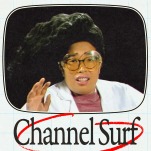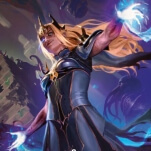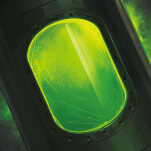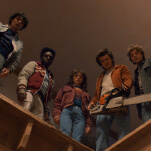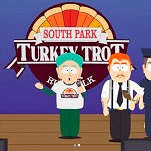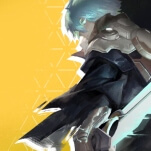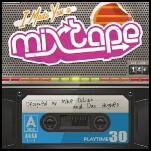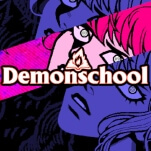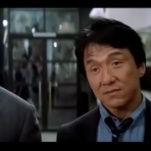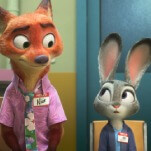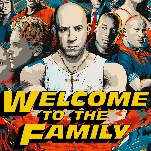Although they came close, cassette tapes never went away completely. With most manufacturers discontinuing production of tape decks long ago—and Sony retiring its line of handheld tape recorders this year—it seems the final nails have been banged into the format’s coffin. But thanks to a number of cassette-enthusiast record labels, tapes have returned to merch tables and online distros—mimicking, in a smaller way, the vinyl resurgence of the 2000s. There’s even a Cassette Store Day this weekend.
I swore off cassette tapes the same day I replaced my forest-green two-door Ford Explorer with a bike. I knew the songs on the tapes in the glovebox well, but their warbled, fuzzy sounds didn’t so much re-create the records they came from as they bended, warped, and pitch-shifted them. But for all their flaws, giving up cassettes felt bittersweet. Eventually, tapes began to re-infiltrate my record collection—and not just thrift-store finds purchased for nostalgia’s sake, but newly manufactured tapes released by currently touring punk, hardcore, and metal bands.
At house shows and in small clubs, cassettes have once again become just as common as T-shirts and vinyl. For fiscally minded fans, they cost half as much as those two items, and they help young bands tour, build a following, and make a little money on the road. That made it harder for me to dismiss cassettes when they came back, even though most people who buy them don’t even play them.
“Oh, none of these kids even have cassette players—that’s admitted by the people that buy them,” says Patrick Kindlon, best known for his work in the bands Self Defense Family and Drug Church, and for co-writing Ghostface Killah’s Twelve Reasons To Die comic book. “That makes cassettes a true, true widget: a true, nonfunctioning product, a true non-purpose product. And the only purpose is to support a band. You could hand them $5, but that might be awkward. You bought something because people love to purchase things, and that’s just a natural fact, and it’s a low-cost item.”
Much like a pin or a patch used to, cassettes put a name and face to an artist. Instead of having to remember a Bandcamp link, they serve as a way to commemorate the experience of a show—for less money than a T-shirt or LP—and, potentially, keep fans coming back. While streaming a release online is the most fiscally sound way to distribute music, it is also the most disposable. Bands who hand out cards with website URLs or download links after shows know most of them end up in the nearest garbage can. A handmade cassette, released in a limited run—often 100 or less—offers a more personal connection to a new band than other formats, even a handmade CD-R. The cassette format is just a more attractive souvenir.
But not all bands benefit. Cassettes have been—and will most likely continue to be—embraced by bands in niche subgenres (though Cassette Store Day releases by The Flaming Lips and Animal Collective may suggest otherwise). But in a short time, those small scenes have grown exponentially, and while I’ve experienced the rebirth of cassettes largely as a consumer, some bands and labels have reaped the benefits. Derrick Shanholtzer-Dvorak plays guitar in Connecticut-based emo band The World Is A Beautiful Place & I Am No Longer Afraid To Die and runs Broken World Media. Shanholtzer-Dvorak started Broken World as a tape label just over a year ago, and since then it has gone from releasing tapes by his projects and friends’ bands to lathe-cut records and vinyl. But he’s hesitant to head too far down that road.
“I feel like every band wants to have a vinyl record out, and so few really know whether or not their release really has a need for it to be,” Shanholtzer-Dvorak says. “They don’t understand that if you want to do this yourself, you’re going to need $2,000 up front to start, just to put out a record. Are you going to recoup that? Are you going to actually sell 500 copies of this release? I have a lot of friends that will ask me to put out their band’s record and it’s really hard to explain, ‘Uh, well… I really don’t want to have fucking 400 copies of this record in my bedroom for the rest of my life. Sorry.’ That’s why I do tapes. I still do tapes for bands I’m really interested in but that don’t really have a following.”
Since cassettes cost far less to produce, they reduce the financial risks for an independent band. And given how easily they can be dubbed—as can not-as-stylish CD-Rs—they allow for every part of a release to be created in-house. They offer a low-cost, low-risk item that bands can sell directly to their fans through mail order or at shows.
But Kindlon is quick to point out that while physical media—tapes included—serve a purpose, digital services have rendered each physical format irrelevant.
“It’s a fetish, and there are people who will buy it so people continue to make it,” he says. “You’ll find people that are into the tactile sensation of holding a record, people that love the art and all that, but ultimately, more and more—and we can sit around and blame iTunes if we want—people just want lists of shit that they click on. [Laughs.] People can say they don’t, but the numbers don’t bear that out at all. Right now vinyl is in a boom period so everybody’s saying, ‘No, people do value physical releases.’ Comic books go through so many fucking boom periods that idiots fucking buy into, and it is foolishness. For example, there are pressing plants in the United States that are turning down business. They are straight-up saying, ‘We can’t take your business. We’re too busy.’ Now, that’s a very interesting approach, because I can assure you they will not be as busy six years from now. [Laughs.] If I were them, I would take the money now.”
As harsh as Kindlon may sound, he cut to the heart of the conversation: In 2013, format doesn’t matter. Vinyl was embraced due to its superior sound quality and, if cared for properly, its ability to withstand repeated plays—but it’s become unreasonably expensive for new bands. CDs are nothing more than vessels for digital files, so the MP3 era made them irrelevant, even if the discs offer superior sound quality to the compressed files. For small bands, this leaves tapes.
“Cassettes are interesting because they are truly a widget to 90 percent of people,” Kindlon says. “You could say I’m hypercritical of vinyl because 90 percent of people buy it and they’ll never actually listen to it; they’ll use the download code. There’s nothing really wrong with that; it just seems like an incredible waste of resources, but that’s fine. People purchased it, and they can shove it up their ass if they want to. What’s the criticism, that nobody’s gonna play it? We can apply that criticism to fucking anything. If Self Defense released a record tomorrow that had etchings that just said ‘Fuck you’ on one side and ‘Blow me’ on the other, and just a download code, people would fucking buy it.
“My message to the youth: Put a piece of fucking dog shit out on the merch table, because who cares? If somebody wants it because it’s a piece of dog shit, and maybe you put a sticker on that dog shit so it’s got the band name on it, allow them to buy it. Who are you to tell anybody they’re an idiot for not liking a format? Market forces, man. If people want it, supply it unless it gives people fucking cancer.”
It’s undeniable that cassettes are, and very well may remain, a niche item. In June, Shanholtzer-Dvorak’s band placed on a couple Billboard charts when it released its debut full-length, Whenever, If Ever, which speaks to how it was able to build a devoted fan base via tape releases—ones that continue to be re-pressed years after their initial release. It’s impossible to predict whether cassettes will be imbued with the same cultural cachet as vinyl, but for the time being, they’ve survived longer than anyone expected. For some, cassettes may never escape gimmick status, but for now they’ve found an unexpected place between fun and functional.

